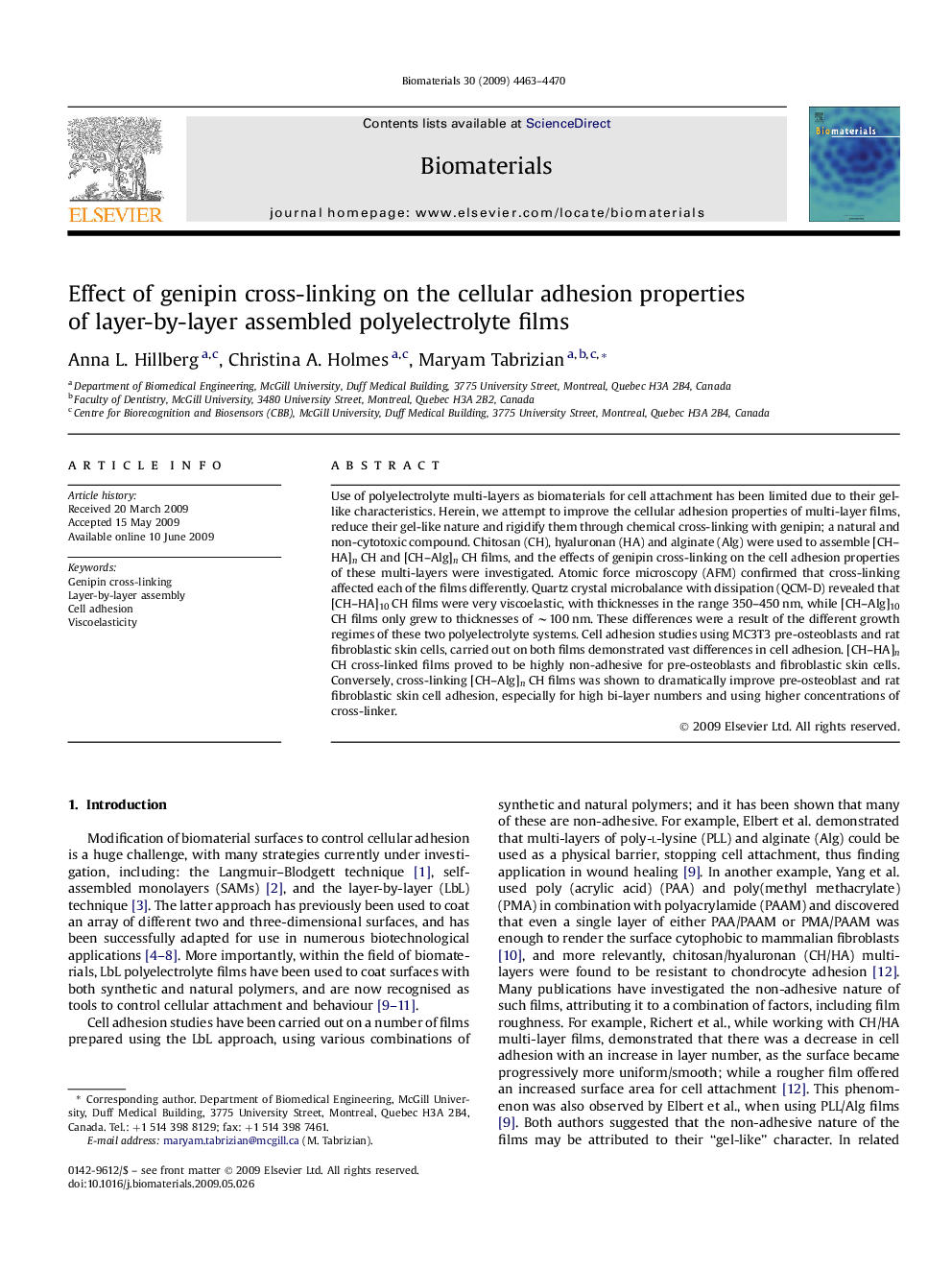| Article ID | Journal | Published Year | Pages | File Type |
|---|---|---|---|---|
| 10230048 | Biomaterials | 2009 | 8 Pages |
Abstract
Use of polyelectrolyte multi-layers as biomaterials for cell attachment has been limited due to their gel-like characteristics. Herein, we attempt to improve the cellular adhesion properties of multi-layer films, reduce their gel-like nature and rigidify them through chemical cross-linking with genipin; a natural and non-cytotoxic compound. Chitosan (CH), hyaluronan (HA) and alginate (Alg) were used to assemble [CH-HA]n CH and [CH-Alg]n CH films, and the effects of genipin cross-linking on the cell adhesion properties of these multi-layers were investigated. Atomic force microscopy (AFM) confirmed that cross-linking affected each of the films differently. Quartz crystal microbalance with dissipation (QCM-D) revealed that [CH-HA]10 CH films were very viscoelastic, with thicknesses in the range 350-450Â nm, while [CH-Alg]10 CH films only grew to thicknesses of â¼100Â nm. These differences were a result of the different growth regimes of these two polyelectrolyte systems. Cell adhesion studies using MC3T3 pre-osteoblasts and rat fibroblastic skin cells, carried out on both films demonstrated vast differences in cell adhesion. [CH-HA]n CH cross-linked films proved to be highly non-adhesive for pre-osteoblasts and fibroblastic skin cells. Conversely, cross-linking [CH-Alg]n CH films was shown to dramatically improve pre-osteoblast and rat fibroblastic skin cell adhesion, especially for high bi-layer numbers and using higher concentrations of cross-linker.
Related Topics
Physical Sciences and Engineering
Chemical Engineering
Bioengineering
Authors
Anna L. Hillberg, Christina A. Holmes, Maryam Tabrizian,
